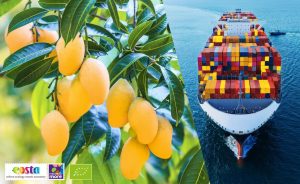The cherry season starts off with some first, extra-early fruit, with characteristics in many cases that do not live up to the quality expected by an increasingly volatile market in both consumption and prices. This is encouraging the search for varieties better adapted to the new commercial requirements.
“The early varieties grown to date tend to be softer and less productive, losing their competitive advantage.” In addition, it must be remembered that every day greater value is placed on produce that can travel as far away as possible, sources from Viveros Mariano Soria indicate.
It is essential for the fruit to be able to stand up to all the processes that such a delicate product passes through, from the hand harvesting or selection to hydro-cooling and transport, before reaching consumers. Accordingly, Luis Elías, an executive from the nursery company, affirms that “Europe is seeing a very important qualitative leap in the change of cherry quality.” And the extra-early and early segments are where they are replacing, at great speed, most of the traditional varieties as the difference in the quality with the new developments is more than obvious.”
In this transformation it is very important to evaluate the characteristics of the production area and the time period in which they work, given that the cherry campaign is very limited in time, and choosing the right variety is an important factor for the farm’s profitability.
Therefore, at Viveros Mariano Soria they are backing the Royal varieties line, which is particularly distinguished by the quality of its fruit. In the early cherry segment where the most traditional varieties, such as Burlat, Early Biggy or Early Lory, are to be found, the Royal varieties represent a very significant change in the fruit quality”.
Royal Bailey is a variety which, although it is not self-fertilising, has significant productions, and the fruit has a calibre that is greater than 30-32 mm without the need for any important technical handling. Royal Hermion, on the other hand, is slightly earlier, as it produces fruit around 7-8 days before Royal Bailey, with a very dark colour and a firmness that is above 80-85 durofel.
Earliness is a highly valued characteristic for the producing sector because, in the case of cherries, a fruit with minimum competition from counterseason offer and the consumption of which is not affected by factors such as temperature, it is a synonym for greater profitability. For this reason, in regions such as Aragon, there are already greenhouse productions that obtain an important market advantage compared to the rest of the Spanish campaign.
On this aspect, Royal Bailey and Royal Hermion are suitable for growing in greenhouses, although as they are not self-fertilising they require a more specific handling. Also, for regions that experience few hours of cold, such as the areas around Alicante, where the traditional varieties have failed over several campaigns, the Royal line has Royal Tioga, which develops very well with just 250 hours of cold, or Royal Hazelnut which, although it is not self-fertilising, can produce large calibre cherries.
And outside the early segment, the company has the Royal Helen variety, which maintains a good production on high altitude farms.



















